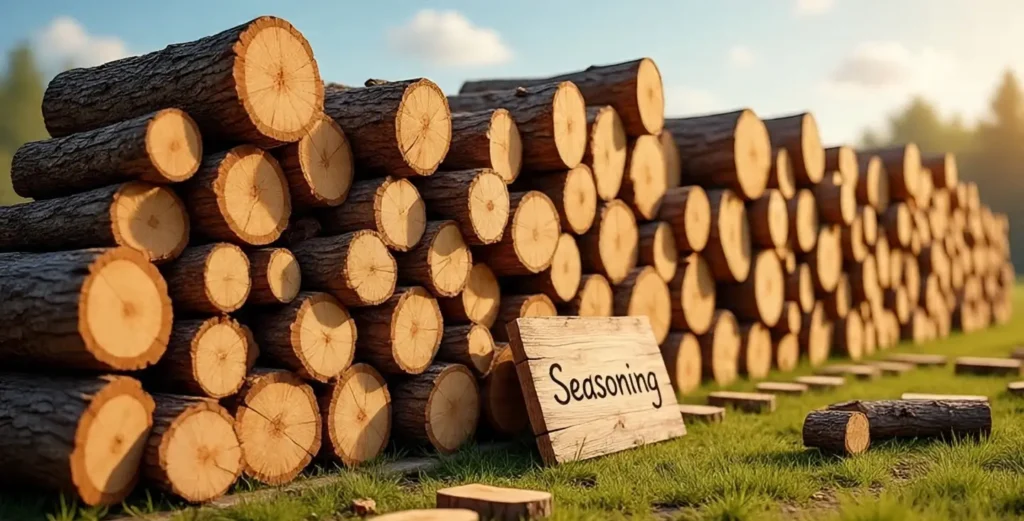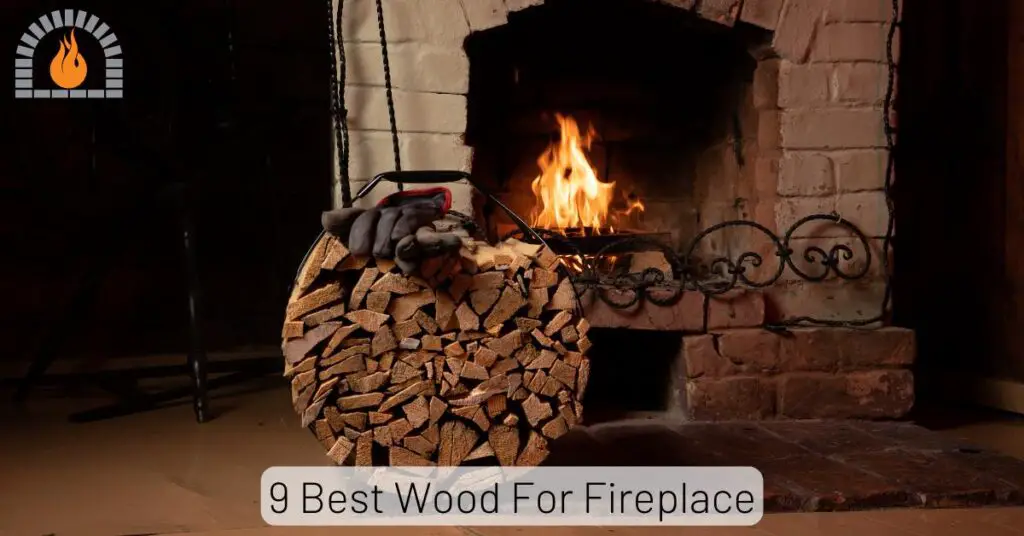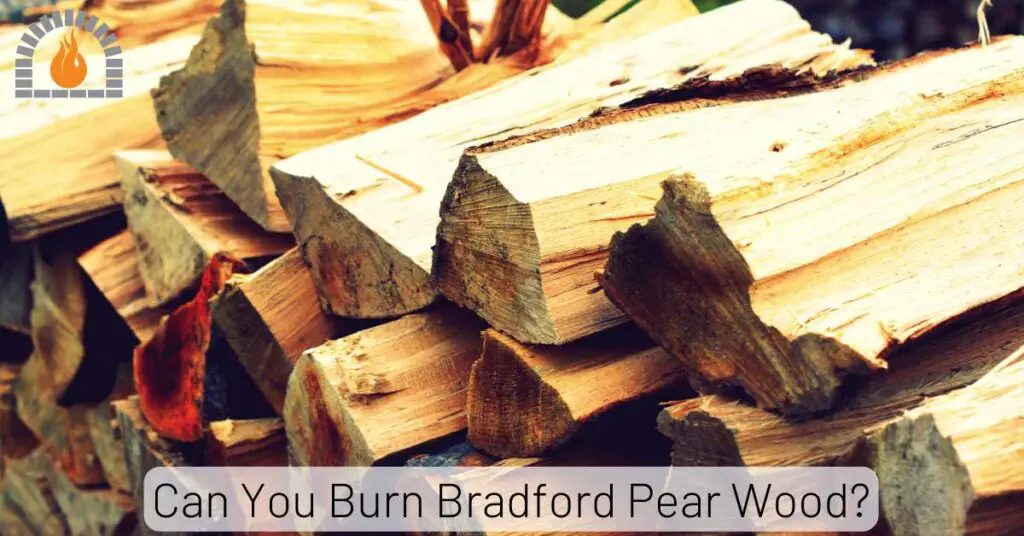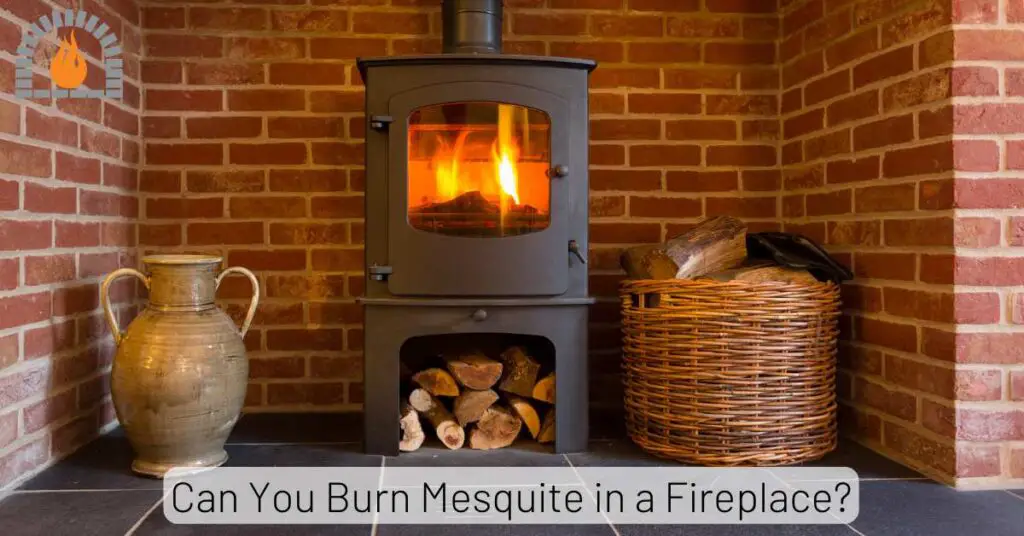Freshly split logs might look ready to burn, but they hold a surprising amount of water inside. If you toss them into your fireplace too soon, instead of crackling flames, you’ll end up with hissing, smoky fires that barely produce heat. That’s where seasoning comes in—the process of drying firewood until it’s ready to burn efficiently. The big question is:how long to season firewood after splitting?
The answer depends on several factors, but understanding the basics will save you time, money, and effort while keeping your home warm all winter long.
How Long to Season Firewood After Splitting?
After splitting, most firewood needs 6 to 18 months to season, depending on the wood type and drying conditions. Softwoods like pine and poplar usually dry in about 6–12 months, while dense hardwoods such as oak and hickory can take up to 14–18 months. To speed up seasoning, split logs into smaller pieces, stack them off the ground in a sunny, breezy location, and cover only the top to protect from rain.
Firewood is considered fully seasoned when its moisture content drops to around 15–20%, which can be checked with a moisture meter, lighter weight, visible cracks, and a hollow “clack” sound when struck together.
| Firewood Type | Wood Category | Average Seasoning Time | Best Drying/Seasoning Method |
|---|---|---|---|
| Oak (Red/White) | Hardwood | 18–24 months | Split small, stacked in full sun |
| Hickory | Hardwood | 18–24 months | Well-ventilated stack, elevated off ground |
| Maple (Sugar/Red) | Hardwood | 12–18 months | Split early, stacked with airflow |
| Ash | Hardwood | 6–12 months | Air-dry; can burn semi-green but best when seasoned |
| Birch | Hardwood | 9–12 months | Split immediately to avoid rotting under bark |
| Cherry | Hardwood | 12–18 months | Covered top, sunny stacking area |
| Beech | Hardwood | 12–18 months | Stack loose for airflow, cover after 6 months |
| Elm | Hardwood | 18–24 months | Split small (tough grain), dry in windy area |
| Walnut | Hardwood | 12–18 months | Stack in sun, cover top only |
| Locust (Black) | Hardwood | 12–18 months | Dries faster than oak, good airflow needed |
| Pine (All types) | Softwood | 6–9 months | Quick drying; cover to prevent sap issues |
| Spruce | Softwood | 6–9 months | Stacks best in open, breezy spot |
| Fir (Douglas) | Softwood | 6–9 months | Easy drying, sun and wind exposure |
| Cedar (Red/White) | Softwood | 6–9 months | Splits easily, air-dry in covered stack |
| Poplar | Softwood | 6–9 months | Quick to dry, best in open-air stack |
| Sycamore | Hardwood | 12–18 months | Stacked with space for airflow |
| Alder | Hardwood | 6–9 months | One of the fastest hardwoods to season |
| Willow | Hardwood | 12–18 months | Must be split quickly; dries slowly |
| Chestnut | Hardwood | 12–18 months | Best stacked off ground, ventilated |
| Eucalyptus | Hardwood | 12–24 months | Very dense; split small, long seasoning required |
Ideal Moisture Levels for Burning
So, how dry should your firewood be? The sweet spot is around 15%–20% moisture content. At this level, the wood catches fire easily, burns hot, and releases less smoke. Anything higher than 25% will give you trouble, while wood that’s too dry (below 10%) can actually burn too fast, giving off a flash of heat but not much longevity.
The seasoning timeline is all about reaching that balance. By splitting, stacking, and storing your wood properly, you help accelerate the evaporation process, getting your firewood into that perfect burn-ready state.
What Does Seasoning Firewood Mean?
Seasoning firewood simply means drying it out so that its moisture content drops to a level where it burns cleanly and efficiently. Freshly cut wood, often called “green wood,” can hold anywhere from 40% to 60% moisture. Imagine trying to light a wet sponge on fire—that’s essentially what you’re doing when you burn unseasoned logs. Instead of giving you heat, the energy from the fire is wasted boiling off water.
The seasoning process allows air, sun, and time to work together, reducing that moisture content down to around 20% or less. At this level, wood becomes far easier to ignite, produces more heat, and creates less creosote buildup in your chimney. Without seasoning, you’ll deal with weak fires, wasted fuel, and even dangerous chimney blockages that can cause house fires.
Think of seasoning as “curing” your firewood the same way you cure meat or cheese—it takes patience, but the end result is far better quality.
Why Properly Seasoned Firewood Matters
Burning green or damp firewood is not just inefficient—it can be downright hazardous. Wet wood produces excess smoke and creosote, a tar-like substance that sticks to chimney walls. Over time, this buildup can ignite, leading to chimney fires. Properly seasoned wood burns hotter, which not only warms your home more effectively but also helps burn off minor residues, keeping your stove or fireplace cleaner.
Another big reason is cost efficiency. If your firewood isn’t seasoned, you’ll end up using more wood to get the same level of heat, meaning you run through your woodpile faster. Seasoned firewood also reduces indoor air pollution, giving you a cleaner, more pleasant fire. In short, properly seasoned wood means safer, hotter, and longer-lasting fires.
Factors That Affect Drying Time
There’s no one-size-fits-all answer to how long firewood takes to season. On average, most wood species need between six months to two years to dry out properly. However, the actual time depends on a few critical factors:
- Wood species – Dense hardwoods like oak, hickory, and maple can take 18–24 months, while softer woods like pine or spruce may be ready in as little as six months.
- Climate – Hot, dry, and windy conditions speed up drying, while humid or rainy climates slow it down.
- Log size – Smaller splits dry much faster than large, chunky rounds.
- Stacking method – Proper airflow around the stack makes a huge difference. A tightly packed pile will trap moisture and take longer to dry.
In short, the way you prepare and store your wood is just as important as the type of wood you’re seasoning.
Best Practices for Splitting and Stacking Firewood

Splitting firewood isn’t just about making logs easier to handle—it’s one of the most important steps in seasoning. When you split a log, you expose the inner wood to air and sunlight. This greatly increases surface area, allowing moisture to escape more quickly. A whole round log with bark intact can take years to dry, while a split piece may be ready in a fraction of that time.
As a rule of thumb, the smaller you split your logs, the faster they’ll dry. However, balance is key—splitting too small means the wood burns too fast, while overly large chunks take forever to season. Most people aim for splits around 3–6 inches thick, which strike a good balance between efficient drying and long burn times.
Proper Stacking Methods for Airflow
Stacking is another crucial factor in the seasoning process. If you just toss wood into a heap, air won’t circulate properly, and the pile will hold moisture. Instead, stack your firewood in neat rows with space between each piece. Elevating the stack off the ground with pallets or logs helps prevent rot, while leaving the ends exposed encourages airflow.
Another trick is to stack wood in a crisscross or “log cabin” pattern at the ends of your pile. This not only stabilizes the stack but also increases airflow. Always keep your stack in a sunny, breezy spot if possible. A covered woodshed with open sides is ideal, but if you’re leaving your pile outdoors, cover only the top with a tarp to shield it from rain while keeping the sides open.
How Sunlight, Wind, and Temperature Help Drying
Nature plays a huge role in seasoning firewood. The more sun and wind your pile gets, the faster it will dry. Direct sunlight helps evaporate moisture, while steady airflow carries it away. Temperature also plays a part—warmer weather speeds up the process, but even cold winter air can dry wood as long as it’s dry and breezy.
On the flip side, rain and high humidity can slow seasoning dramatically. A rainy climate might double the time it takes compared to a dry one. That’s why location matters so much. In desert-like areas, wood can dry in under six months, while in damp coastal regions, it may take over two years for the same wood.
Regional Differences in Drying Times
Seasoning times can vary greatly depending on where you live. For example:
- Northern U.S. and Canada: Cold, snowy winters mean slower drying, so hardwoods often need 18–24 months.
- Southern U.S.: Hot and humid summers still allow decent drying, but rain can slow progress, averaging 12–18 months.
- Dry Western States: Thanks to heat and low humidity, wood may be ready in as little as 6–12 months.
- Coastal Areas: High humidity and salty air make drying difficult, often requiring extended seasoning times.
Understanding your region’s climate will help you plan ahead and avoid the disappointment of wet wood when winter hits.
Common Mistakes to Avoid When Seasoning Firewood
Covering Wood Too Early
One of the biggest mistakes beginners make is covering their woodpile right after splitting. While it seems logical to protect fresh wood from rain, covering it too soon actually traps moisture inside, slowing down the drying process. Instead, leave it uncovered for the first several months, then add a top cover once it’s mostly seasoned.
Stacking in Shady or Damp Areas
Another common error is stacking wood in a damp or shaded location. A shady corner of your yard might seem convenient, but without sun and wind, your logs will take twice as long to season. Similarly, stacking too close to a wall or fence reduces airflow. The best spot is a sunny, breezy area with good drainage.
Other Mistakes to Watch For
- Stacking too tightly: Logs packed tightly together can’t breathe, leading to mold growth.
- Leaving bark-on rounds: Whole unsplit logs, especially hardwoods, can take years to dry.
- Burning too soon: Even if it feels dry, burning before fully seasoned wastes heat and risks creosote buildup.
Avoiding these pitfalls ensures your firewood seasons faster and burns cleaner.
Signs That Your Firewood is Fully Seasoned
Visual Cues
One of the easiest ways to tell if firewood is ready is simply to look at it. Seasoned wood usually has:
- Cracks and splits at the ends
- Grayish or faded color instead of fresh, bright tones
- Loose or peeling bark
- Dry appearance with no sap seeping out
If your logs still look “green” and shiny, they need more time.
Sound Test and Weight Difference
The knock test is a classic method: bang two logs together. If they make a sharp, hollow clack, they’re dry. If the sound is a dull thud, they’re still holding moisture.
Weight is another clear sign. Pick up a green log and compare it with one that’s been seasoning for a year—the difference can be shocking. Seasoned wood feels light, while green wood feels heavy and damp.
Combine these methods with a moisture meter, and you’ll never second-guess your firewood again.
You May Also Like To Read:
FAQs About Firewood Seasoning
- How long should oak season after splitting?
Oak typically needs 18–24 months due to its density. - Can I burn firewood after 6 months?
Yes, but only softer woods like pine or poplar. Hardwoods usually need longer. - Does splitting wood make it season faster?
Absolutely. Splitting exposes more surface area, speeding up drying by months. - What happens if I burn unseasoned wood?
You’ll get poor heat, lots of smoke, and dangerous creosote buildup in your chimney. - Is kiln-dried firewood worth it?
If you need immediate firewood, yes. But for long-term use, naturally seasoned wood is more cost-effective.
Affiliate Disclosure: Fireplaceadviser.com is a participant in the Amazon Services LLC Associates Program. We may earn a commission when you click on certain links on this site and purchase.

Hello!! I am Jamal Khan. I often fix my home electric heaters and gas stove problems and research the common issues in the heating units to improve my knowledge and expertise. The aim of establishing fireplaceadviser.com is to share my expertise and knowledge with my audience.


















